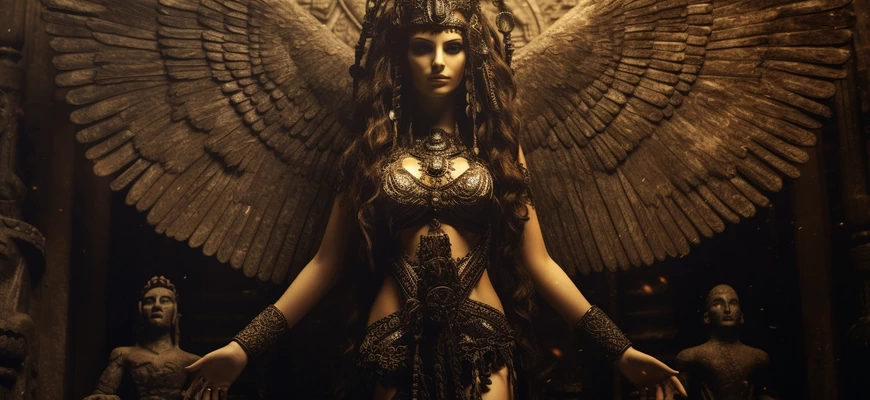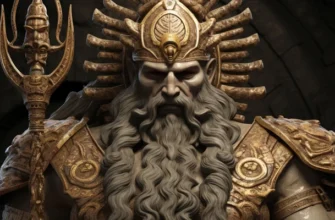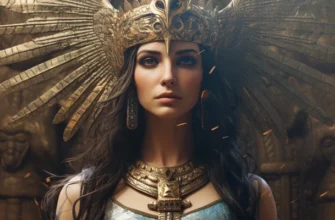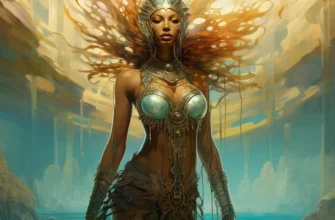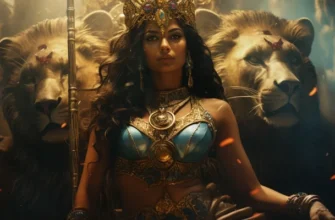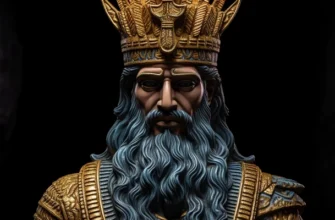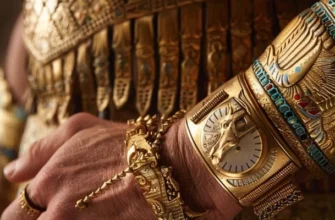Sumerian mythology hides secrets in the person of the goddess Ereshkigal. She, the ruler of the underworld, determines life and death, creating a mysterious image in the Sumerian antes. Let’s take a look at her role in myths, symbolism, and influence on culture to uncover the secrets of Sumerian mythology.
- The role of the goddess Ereshkigal in the pantheon
- Mythological Records of the Goddess Ereshkigal
- Epic Poems about the Goddess Ereshkigal
- Attributes and Symbolism of the Goddess Ereshkigal
- The role of the goddess Ereshkigal in Rites and Cult
- Modern Study and Influence of the Goddess Ereshkigal
- Artifacts and evidence of the cult
- Reflections of Ereshkigal in Modern Literature
- Conclusions
The role of the goddess Ereshkigal in the pantheon
The goddess Ereshkigal played a key role in the Sumerian pantheon as the ruler of the underworld. Her influence ranged from managing the life cycle to determining the fate of the dead. By coordinating her power with other deities, she symbolized an important aspect of cosmogony and human existence in Sumerian mythology.
In the Sumerian pantheon, the goddess Ereshkigal had a complex relationship with other goddesses, especially her sister Inanna. This interaction reflects the tension between life and death, fertility and infertility. Ereshkigal’s role in the community of goddesses was defined not only by her sacred power over the underworld, but also by her influence on natural and human cycles.
Mythological Records of the Goddess Ereshkigal
- Epic Poems:“Gilgamesh”: The appearance of Ereshkigal in the Gilgamesh myths, where her role is defined in the context of death and power over the underworld.
“The Adventures of Desetibal: The interaction of Ereshkigal with other gods in the myths of the hero Desetibal, revealing her influence on the fate of the characters.
- Myths and Legends: Ereshkigal’s role in the creation myths and her relationship with other goddesses, including her sister Inanna.
These mythological records provide a unique perspective on the versatility of the goddess Ereshkigal and her important role in Sumerian mythology.
Sisterly Love and Envy: Inanna, the goddess of love and fertility, is determined to descend to the underworld to meet her sister Ereshkigal.
Ereshkigal, the ruler of the underworld, accepts Inanna, but under her own harsh conditions, leading to an unexpected turn of events.
Death and Resurrection: In the underworld, Ereshkigal strips Inanna of all her amulets, symbolizing the deprivation of fertility and vitality.
After Inanna’s death, the goddess Ningal intervenes by negotiating with Enki, who restores Inanna’s life.
Ereshkigal and Inanna represent the two opposite sides of the binary system of life and death.
Their relationship symbolizes the larger theme of the rhythmic nature of life, which includes the cycles of birth and death.
This contradictory interaction reflects deep aspects of nature and human existence in Sumerian mythology.
Epic Poems about the Goddess Ereshkigal
- “Gilgamesh: The epic depicts Ereshkigal as the ruler of the underworld, defining the participation of the hero Gilgamesh in the world of the dead. The role of the goddess in shaping the hero’s life challenges is important. Gilgamesh is a Sumerian epic poem written around 2100 BC. The protagonist, Gilgamesh, king of Uruk, embarks on a journey to find eternal life after the death of his friend Enkidu. The poem describes his adventures in detail, including a meeting with the god Utnapishtim, who tells him about the flood and teaches Gilgamesh important lessons. The poem expresses philosophical reflections on death, divinity, and the true meaning of life, becoming an important work in world literature and the study of mythology.
- “The Adventures of Desetibal”: The epic poem reveals Ereshkigal’s interaction with Desetibal, a hero who travels to the underworld. The goddess plays an important role in the hero’s trials and determines his fate.
These epic poems not only reveal the secrets of the goddess Ereshkigal, but also place her deeply in the context of Sumerian mythology, defining her influence on the fates of heroes and the world of the dead.
Attributes and Symbolism of the Goddess Ereshkigal
- The Underworld: The ruler of the Aral Sea: Ereshkigal rules over the underworld of Aral, determining the fates of the dead and regulating the world after death.
- The contradiction of Life and Death: The symbol of Life and Death: As the goddess of the underworld, Ereshkigal is a symbol of the eternal cycle of life and death.
- Duality: Interaction with Inanna: Her interaction with her sister Inanna reflects the dualism of the contradictory aspects of nature and human existence.
- Power and Authority: Throne and Rod: As a ruler, she may be represented on a throne with a rod, symbolizing her power over the underworld.
- Rituals and Worship: Ceremonies of Remembrance: She is assigned rituals and worship aimed at ensuring the soul’s good passage to the underworld.
- Symbols of Death: Skeleton or Corpse Images: Her attributes may include symbols of death emphasizing her power over the underworld.
The goddess Ereshkigal embodies a complex and important role in Sumerian mythology, and her attributes and symbolism point to deep philosophical aspects of nature and life.
The role of the goddess Ereshkigal in Rites and Cult
- Life Cycle: Rites of birth and death: Ereshkigal prescribes rituals related to birth and death, reflecting her power over the cycle of life.
- Commemoration of the Dead: Burial Ceremonies: In the cult of the goddess, worship and burial ceremonies are performed to ensure the well-being of the souls of the dead in the underworld.
- Sacred Rites: Rites of Honor: Sacrifices and rites of worship to Ereshkigal are used to secure her favor and mercy in matters of life and death.
- Cyclic Festivals: Feasts and Rituals: Special festivals honor the goddess by emphasizing the importance of the cyclical processes of nature and life.
- Priestesses of Ereshkigal: Intermediary priestesses: Priestesses, handmaidens of Ereshkigal, played a key role in conducting rituals and interacting with the deity.
- Messengers of the Goddess: Spiritual Leaders: Messengers and worshippers, contributing to the cult of Ereshkigal, fulfilled their duties to ensure well-being and harmony in life and the afterlife.
Ereshkigal’s role in the cult of Sumerian mythology was important for rituals related to life and death, which contributed to the understanding of cosmic cycles and the depths of the human soul.
Modern Study and Influence of the Goddess Ereshkigal
Archaeological Findings: Excavations and Research: Modern archaeological excavations in Sumerian regions may yield new artifacts and knowledge about the cult of Ereshkigal, expanding our understanding of her religious role.
Literary Influence: Literary Works: Many contemporary writers use the image of Ereshkigal in their works, treating her as a symbol of death, mystery, and feminine power.
Existing Research: Academic Works: Universities and research groups conduct academic studies analyzing mythological textual sources and archaeological evidence of the cult of Ereshkigal.
Art and Culture: Artwork: The goddess Ereshkigal can be an object of creativity for artists and contemporary creators who interpret her image in various artistic forms.
Philosophy and Religious Studies: Analysis of Religious Concepts: Philosophers and religious scholars explore the role of Ereshkigal in the context of Sumerian religion, looking at its symbolism and influence on mythological thinking.
Popular Culture: Movies and Literature: Ereshkigal’s image may appear in popular cultural works, expanding awareness of this goddess among a wider audience.
The study and influence of Ereshkigal continues in the modern world, sparking interest in ancient mythology and its importance to contemporary understandings of culture, religion, and art.
Artifacts and evidence of the cult
Archaeological research in the region of ancient Mesopotamia, in particular in Sumer, where the Sumerian civilization was located, has revealed a variety of artifacts and evidence related to the Sumerian religion and the cult of the goddess Ereshkigal. Some of them indicate the existence of a cult and the worship of this goddess:
Religious texts: Surviving Sumerian literary texts such as the Desetibal, the Epic of Atani, and the Song of Judgment, which mention stories of interactions with Ereshkigal and other deities.
Ritual objects: Finds of ritual objects, such as cult vessels, amulets, amphorae, and other objects that may be associated with religious rites and cult practices related to the goddess.
Sacred Structures: The archaeological remains of sacred buildings that may be associated with cultic sites or sanctuaries where religious rites were performed.
Ritual Texts and Sculptures: Sculptures and stamp seals depicting religious scenes that may reflect rituals and ceremonies associated with Ereshkigal.
Burials with Religious Objects: Finds in graves and burials that reveal religious objects or symbols that indicate the importance of the cult of the dead and Erechigal power in the underworld.
These artifacts and testimonies provide important insight into the religious beliefs and cult of Ereshkigal in Sumerian society, as well as reveal aspects of ritual and cultic practice associated with this goddess.
Reflections of Ereshkigal in Modern Literature
The image of the goddess Ereshkigal and elements of her mythology can be found in modern literature, where writers and creators use her image to create interesting stories and symbolism. Here are some examples of how she is reflected:
Literary adaptations: Authors can use mythological elements about Ereshkigal to create new stories or rewrite old ones, adding modern context and interpretations.
Fantasy and Science Fiction: In fantasy and science fiction works, you can find reflections of Ereshkigal as a deity or character interacting with heroes in modern or futuristic settings.
Contemporary Novels and Poetry: Writers use the image of Ereshkigal to create profound stories about life, death, love, and mystery, weaving mythological motifs into their novels and poems.
Theater and Cinema: In some theatrical productions or films, one can see reflections of Ereshkigal where actors or animators embody this mythological image.
Art and Illustrations: Artists and illustrators can use the image of Ereshkigal in their works, trying to convey the mystery and magic of this goddess.
Contemporary literature and art use mythology as inspiration for new creations, expanding the meaning and interpretations of ancient deities. Ereshkigal, as a symbol of death and the underworld, can provide deep symbolism and emotional overtones in literary and artistic works.
Conclusions
The goddess Ereshkigal played a decisive role in the formation of Sumerian culture, thanks to her power over the underworld and the regulation of life and death. Attested to in mythological texts and archaeological finds, her cult defined the religious and ritual aspects of society.
The image of Ereshkigal influenced various aspects of Sumerian culture, including art, literature, and religious beliefs. Her stories and images became an important component in shaping the mentality and perception of the world in Sumerian society.
Thus, the goddess Ereshkigal not only played a role in Sumerian mythology, but also influenced the religious and cultural aspects of ancient Sumerian society, contributing to the understanding of life, death, and nature.
The article on the goddess Ereshkigal highlights her crucial role in shaping Sumerian culture. Focusing on her symbolism of life and death, her power over the underworld, and her interaction with other gods, the article examines the religious rites, worship, and cultural influence of the goddess. Ereshkigal, as the ruler of the underworld, became not only an object of worship but also a symbol that defined the cultural and religious views of Sumerian society, strengthening her place in history as an integral part of the ancient civilization of Mesopotamia.
